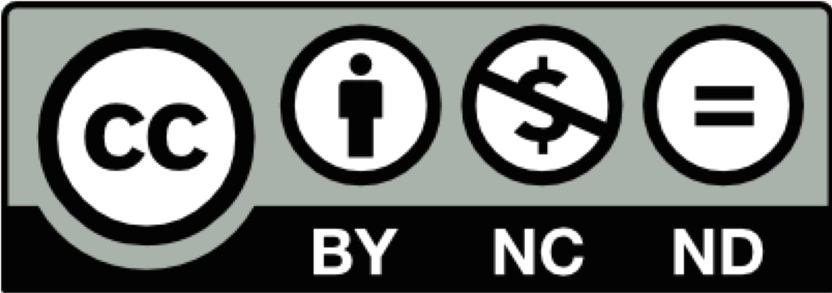The article deals with the conceptions of the international migration, focusing on the most relevant strategies in terms of migrant workers adaptation. The authors analyse the following conceptions: the “Pull/Push” theory, Adaptation (acculturation) Strategy, Relative Inequality Theory of Migration, the Human Capital Theory. Legal framework of Ukraine and Poland in the sphere of labor migration regulation, including set of legal acts, adopted by both countries in order to minimize possible negative outcomes caused by evolving migration flows have been analyzed. The main “pushing” migration factors of the donor countries and “pulling” factors of the recipients are clarified. The main motive for migrating to Poland is to form a so-called "airbag" for their families in Ukraine. The point is that thanks to remittances, clothes, food, etc., Ukrainian labor migrants form a sense of confidence in the future of their family members in the “era of poverty”, which is identified with the Ukrainian state. The positive and negative consequences of the migration flows intensification of Ukrainian workers for both Ukraine and Poland are highlighted. Future scenarios for modeling migration flows are shaped, namely: optimistic, pessimistic, and realistic and the Covid-19 migration pattern. Recommendations for strengthening the effectiveness of Ukrainian-Polish cooperation in solving of the labor migration problems are suggested. The assessment of the trends of current migration policy of Warsaw has been carried out in accordance with multilateral MIPEX Index. Thus, migration policy is assessing as the “equality in the paper” and is rating lower (40/100 points) than average indicator among EU-countries. The conclusions assert that migration policy should be based on the principle of “tripartism” and serve the donor state, the recipient state and the migrants themselves.
- A Worker from Ukraine between Poland and Germany: Report. (2019). [In Ukrainian]. The EWL S.A. and the Center for Eastern European Studies at the University of Warsaw. Retrieved from https://www.ewlhr.eu/wp-content/uploads/2019/07 /EWL-RAPORT-2019-UKR-FINAL-WWW.pdf
- Banakhevych, Yu. (2020). Last trends of labor migration: Poland – the leading state among the EU. [In Ukrainian]. Ukrinform. Retrieved from https://www.ukrinform.ua/rubric-economy/3150437-ostanni-trendi-trudovoi-migracii-polsa-lider-v-es.html
- Castles, S.& Miller, M. (2011). Migracje we współczesnym świecie.Warszawa: Wydawnictwo Naukowe PWN.
- Citizens of Ukraine on the Polish Labor Market – Experience, Challenges, and Perspective – Research. (2019). [In Ukrainian]. Foundation for the Support of Migrants in the Labour Market – EWL & Centre for East European Studies University of Warsaw. Retrieved from https://www.ewlhr.eu/wp-content/uploads /2019/10/EWL_RA PORT_ GLOWNY_2019 _UKR_FINAL_ WWW.pdf
- Fehler, W. Cebul, K. & Podgórzańska, R. (2017). Migracje jako wyzwanie dla Unii Europejskiej i wybranych państw członkowskich. Warszawa: Difin SA.
- Foreign Labor Migration of Ukrainians is Going to Increase in the Future – Research. (2018). [In Ukrainian]. Unian. Retrieved from https://www.unian.ua/ economics/other/2378727-v-maybutnomu-trudova-migra tsiya-ukrajintsiv-za-kordon-lishe-zrosta time-nbu.html
- Hirnyk, A. & Hirnyk, H. (2014). Pecularities of Adaptation of Ukrainian Educational Migrants to Living Conditions Abroad. [In Ukrainian]. Scientific Herald of Kyiv-Mohyla Academy, Vol. 162. Pedagogical and psycological sciences, social work, 51-55. Retrieved from http://ekmair.ukma.edu.ua/bitstream/handle/123456789/3932/Hirnyk_Osoblyv osti_ adaptatsii _ukrainskykh_ osvitnikh_mihrantiv.pdf;jsessionid=210DC13CFF3182B088750 578F3094EB2?sequence=1
- Jaskułowski, K. & Pawlak, M. (2016). Główne teorie migracji międzynarodowych: przegląd, krytyka, perspektywy. Sprawy Narodowościowe. Seria Nowa, Nr. 48, 128-146. https://doi.org/10.11649/sn.2016.008
- Libanova, E. (2021). The Minimum Wage Should be Doubled, But in a Year. [In Ukrainian]. Minfin. Retrieved from https://minfin.com.ua/ua/2021/02/02/ 59224942/
- Migrant integration policy index. (2020). Poland in 2019. МІРЕХ. Retrieved from https://www.mipex.eu/poland
- Nosek, K. (2018). Migracja zarobkowa a poczucie jakości życia rodzin transnarodowych. Olsztyn: Centrum Badań Społecznych, Towarzystwo naukowe im.Wojcieha Ketrzynskiego.
- Novosad, K. (2020). Modern Models of International Migration Research. [In Ukrainian]. GRANI, 23(5), 15-27. Retrieved from https://journals.indexcopernicus.com/api/file/viewByFileId/1031032.pdf https://doi.org/10.15421/172049
- On Approval of the Action Plan for 2018-2021 for the Implementation of the Strategy of the State Migration Policy of Ukraine for the Period up to 2025. (2018). [In Ukrainian]. Zakon.rada. Retrieved from https://zakon.rada.gov.ua/laws/ show/602-2018-%D1%80
- On Approval of the Regulation on the State Migration Service of Ukraine (2014). [In Ukrainian]. Zakon.rada. Retrieved from https://zakon.rada.gov.ua/laws/show/360-2014-%D0%BF
- On Approval of the Strategy of the State Migration Policy of Ukraine for the Period up to 2025: Order of the Cabinet of Ministers of Ukraine. (2017). [In Ukrainian]. Zakon.rada. Retrieved from https://zakon.rada.gov.ua/laws/show/482-2017-%D1%80
- Polityka Migracyjna Polski. (2019). Interwencjaprawna. Retrieved from https://interwencjaprawna.pl/wp-content/uploads /2019/06/Polityka-migracyjna-Polski-wersja-ostateczna.pdf
- Rekordowo niskie bezrobocie. (2019). Ministerstwo Rodziny, Pracy i Polityki Społecznej. Retrieved from https://www.gov.pl/web/rodzina/rekordowo-niskie-bezrobocie-w-maju
- Socio-Economic Situation of Ukraine in January-February 2020. (2020). [In Ukrainian]. Ukrstat. Retrieved from http://www.ukrstat.gov.ua/druk/soc_ek /2020/publ_ 02_2020_u.html
- Sokołowicz, M. E., & Lishchynskyy, I. (2018). Czy Polska i Ukraina to naturalne centra przepływów migracyjnych? Studium zjawiska migracji zarobkowych i jego kluczowych atrybutów. Comparative Economic Research. Central and Eastern Europe, 21(1), 45-65. https://doi.org/10.2478/cer-2018-0003
- Tarcza antykryzysowa. (2020). Gov.pl. Retrieved from https://www.gov.pl/web/rozwoj/tarcza-antykryzysowa
- Ustawa o cudzoziemcach z dnia 12 grudnia 2013 r. (2013). Prawo.sejm. Retrived from http://prawo.sejm.gov.pl /isap.nsf/download.xsp/WDU20130001650 /T/D201 31650L.pdf
- Ustawa o Karcie Polaka. (2007). Prawo.sejm. Retrieved from http://prawo.sejm.gov.pl/isap.nsf/DocDetails.xsp?id=WDU20071801280
- Ustawa o obywatelstwie polskim. (2009). Prawo.sejm. Retrived from http://prawo.sejm.gov.pl/isap.nsf/DocDetails.xsp?id=WDU20120000161
- Ustawa o promocji zatrudnienia i instytucjach rynku pracy. (2004). Prawo.sejm.Retrived from http://prawo.sejm.gov.pl /isap.nsf/download.xsp/WDU 20170001065/U/D20171065Lj.pdf
- Ustawa o szczególnych instrumentach wsparcia w związku z rozprzestrzenianiem się wirusa SARS-CoV-2. (2020). Prawo.sejm, 16 kwietnia. Retrived from http://prawo.sejm.gov.pl/isap.nsf/DocDetails.xsp?id=WDU20 200000695
- Ustawa o zatrudnieniu i przeciwdziałaniu bezrobociu. (1994). Prawo.sejm. Retrieved from http://prawo.sejm.gov.pl/ isap.nsf/DocDetails.xsp?id=WDU1 9950010001
- Verbovyi, M. (2011). Doctrinal Basis of International Labor Migration. [In Ukrainian]. Democratic governance, 7, 1-7. Retrieved from http://nbuv.gov.ua/ UJRN/DeVr _2011_7_9
- Wykazy krajów urodzenia, wyjazdu, przyjazdu, obywatelstwa. (2020). Główny Urząd Statystyczny. Retrived from https://stat.gov.pl/obszary-tematyczne/ludnosc/migracje-zagraniczne-ludnosci/wykazy-krajow-urodzenia-wyjazdu-przyjazdu-obywatelstwa,9,1.html
